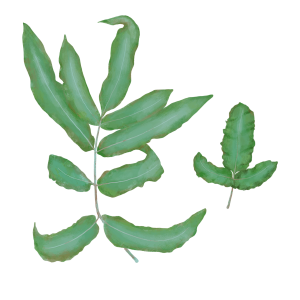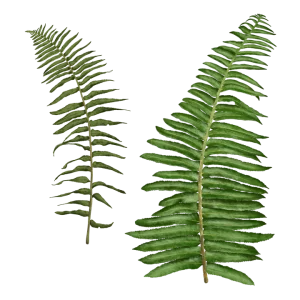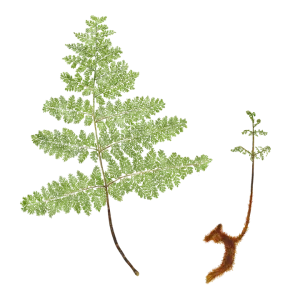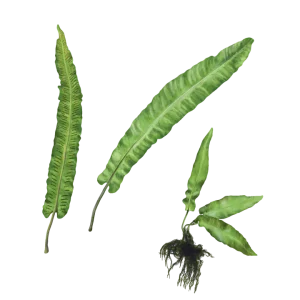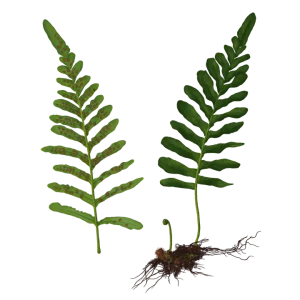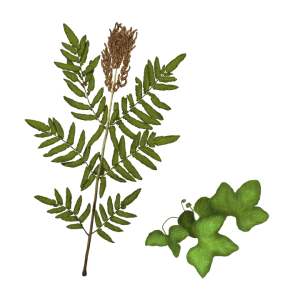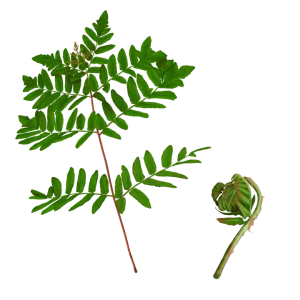Dryopteris sieboldii – This is a most unusual fern with magnificent and oddly shaped fronds that mark it out as quite distinct from any other Dryopteris. The leaves have a leathery quality with 2-5 pairs of broad pinnae and a long pointed terminal pinnule. The vegetative fronds are arching, the fertile ones more erect with slightly narrower pinnae and with sori toward the margins The sori are scattered thickly but unevenly, orange-brown becoming black, contrasting with the leathery, rather glaucous blade. A very handsome plant.
SUBSTRATE & WATERING
Grows in moist to moist-wet garden soil or potting mix
This is a unique drought-tolerant addition for the shady garden
Dryopteris sieboldii requires adequate moisture and a sheltered position as it is not bone-hardy in every winter (covering the crown would help greatly in very cold winters). In a choice position it can remain evergreen, but it will become deciduous as a protective measure against the cold. Use the old fronds as protection for the crown. It is slow to bulk up and propagate but well worth the wait. Fronds eventually get 20-50 by 20-35 cm. and the rhizome will gradually creep.
The leaves are a bluish-green, and look lovely with glaucous hostas
Because the plant is not made up of many leaves, it will show nicely in a stylized Japanese garden.

Available soon in our webshop.

